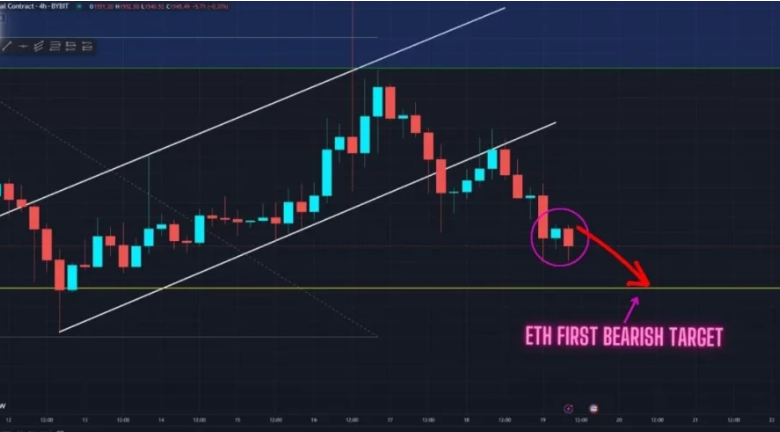Understanding Ethereum Price Trends: What You Need to Know

Ethereum has solidified its place as one of the most influential cryptocurrencies, with a growing community of investors, developers, and enthusiasts. As the second-largest cryptocurrency by market capitalization, Ethereum Price trend has become a significant point of analysis for those looking to understand the market’s movements. In this article, we’ll delve into what drives the Ethereum price, how to analyze its trends, and what you should consider when navigating the Ethereum market.
The Evolution of Ethereum and Its Price
Ethereum was proposed in 2013 by Vitalik Buterin and officially launched in 2015. Unlike Bitcoin, which is mainly a store of value, Ethereum was designed to serve as a decentralized platform that enables smart contracts and decentralized applications (dApps). This unique approach has contributed to the network’s widespread adoption and usage.
From its early days, Ethereum has experienced significant fluctuations in price. Initially valued at just a few dollars, it reached its first notable surge in 2017, when the Ethereum price skyrocketed to over $1,000. However, like many cryptocurrencies, Ethereum’s price is highly volatile, experiencing both rapid gains and sharp declines.
Factors Influencing Ethereum Price Trends
Several factors influence the Ethereum price, and understanding these can help you make more informed decisions in the market. Here are some key elements that play a role:
1. Supply and Demand
Like any asset, Ethereum’s price is affected by supply and demand dynamics. The total supply of Ether (ETH), Ethereum’s native token, is not capped like Bitcoin, but its issuance is controlled through the network’s consensus protocol. When demand for Ethereum increases—whether for its decentralized applications, smart contracts, or the general use of ETH—the price tends to rise. Conversely, when interest wanes, prices may fall.
2. Network Upgrades and Developments
Ethereum is constantly evolving, with significant upgrades (known as “Ethereum Improvement Proposals” or EIPs) regularly implemented. One of the most notable developments is the transition from Proof-of-Work (PoW) to Proof-of-Stake (PoS), known as Ethereum 2.0. This upgrade aims to make the network more scalable, energy-efficient, and secure. Each time a major upgrade is announced or implemented, it can influence the Ethereum price significantly, as investors anticipate the benefits and risks associated with these changes.
3. Ethereum’s Role in Decentralized Finance (DeFi)
Ethereum plays a pivotal role in the rapidly expanding world of decentralized finance (DeFi). Platforms built on Ethereum enable borrowing, lending, and other financial activities without traditional intermediaries like banks. As DeFi continues to grow, the demand for Ethereum increases, as most DeFi protocols rely on Ethereum’s network. This trend can directly influence the price of Ethereum, especially during periods of significant DeFi adoption.
4. Market Sentiment and News
Ethereum’s price is also sensitive to broader market sentiment and news. Major news events—whether positive, like institutional adoption of Ethereum, or negative, such as regulatory concerns or network vulnerabilities—can cause the price to spike or plummet. Cryptocurrencies, including Ethereum, tend to react strongly to public perception and news coverage.
5. Competition from Other Blockchains
Ethereum faces competition from other blockchain platforms, including Binance Smart Chain (BSC), Solana, and Cardano. These platforms offer similar functionalities, such as smart contracts and decentralized applications. While Ethereum remains the dominant platform, any advancements made by competitors or shifts in developer preferences can impact Ethereum’s price. A surge in adoption of competing blockchains can lead to a decline in demand for Ethereum, thereby influencing its price.
How to Analyze Ethereum Price Trends
Understanding the price trend of Ethereum requires more than just monitoring the token’s value on a daily basis. To get a clearer picture of its potential future movements, investors and traders often turn to various tools and strategies for analysis:
1. Technical Analysis
Technical analysis involves studying past price movements and using various indicators, like moving averages, RSI (Relative Strength Index), and MACD (Moving Average Convergence Divergence), to predict future trends. This approach relies on the belief that market sentiment is reflected in historical price data, which can be used to identify patterns and forecast potential price movements. For Ethereum price, these tools can help spot support and resistance levels, trends, and reversals.
2. Fundamental Analysis
Fundamental analysis looks at the underlying factors that could affect the value of Ethereum over the long term. This includes studying the Ethereum network’s health, upgrades, developer activity, and market adoption. Keeping track of the development of Ethereum 2.0, as well as growth in decentralized applications, can provide insight into whether Ethereum price is likely to rise or fall.
3. On-Chain Analysis
On-chain analysis focuses on data from the blockchain itself, such as transaction volumes, wallet activity, and network fees. For Ethereum, on-chain metrics like active addresses and gas fees can indicate the level of network activity, which correlates to market interest. Higher levels of transaction volume often coincide with an increase in demand for Ether, which may drive up the price.
Predicting Ethereum Price: A Look at the Future
While predicting the exact price of Ethereum is impossible due to its volatile nature, there are several trends that could influence its future:
- Ethereum 2.0 Completion: As Ethereum transitions fully to a Proof-of-Stake model, the network’s scalability and security are expected to improve, potentially attracting more users and increasing the value of ETH.
- Institutional Adoption: Institutional investors have been showing growing interest in Ethereum, particularly in its use cases beyond simple transfers, such as smart contracts and DeFi. As large institutions move into the Ethereum space, the demand for Ethereum could rise, potentially pushing the price upward.
- Global Regulatory Environment: Government regulations can have a profound impact on the Ethereum price. Positive regulatory developments may provide more legitimacy to the asset class, whereas restrictive regulations can dampen investor sentiment. The ongoing regulatory landscape in major markets like the U.S. and Europe will be crucial to the price trajectory of Ethereum.
Conclusion
The Ethereum price is influenced by a variety of factors, ranging from network developments to broader market sentiment. By understanding the forces that drive price trends and utilizing both technical and fundamental analysis, investors can better position themselves in the market. However, as with any cryptocurrency, Ethereum’s price remains volatile and unpredictable, so it’s important to remain cautious and informed when making investment decisions. Whether you’re an experienced investor or a newcomer to the Ethereum space, staying updated on network upgrades, market movements, and the evolving landscape of decentralized finance will give you a stronger grasp on Ethereum price trends and what they mean for the future.




